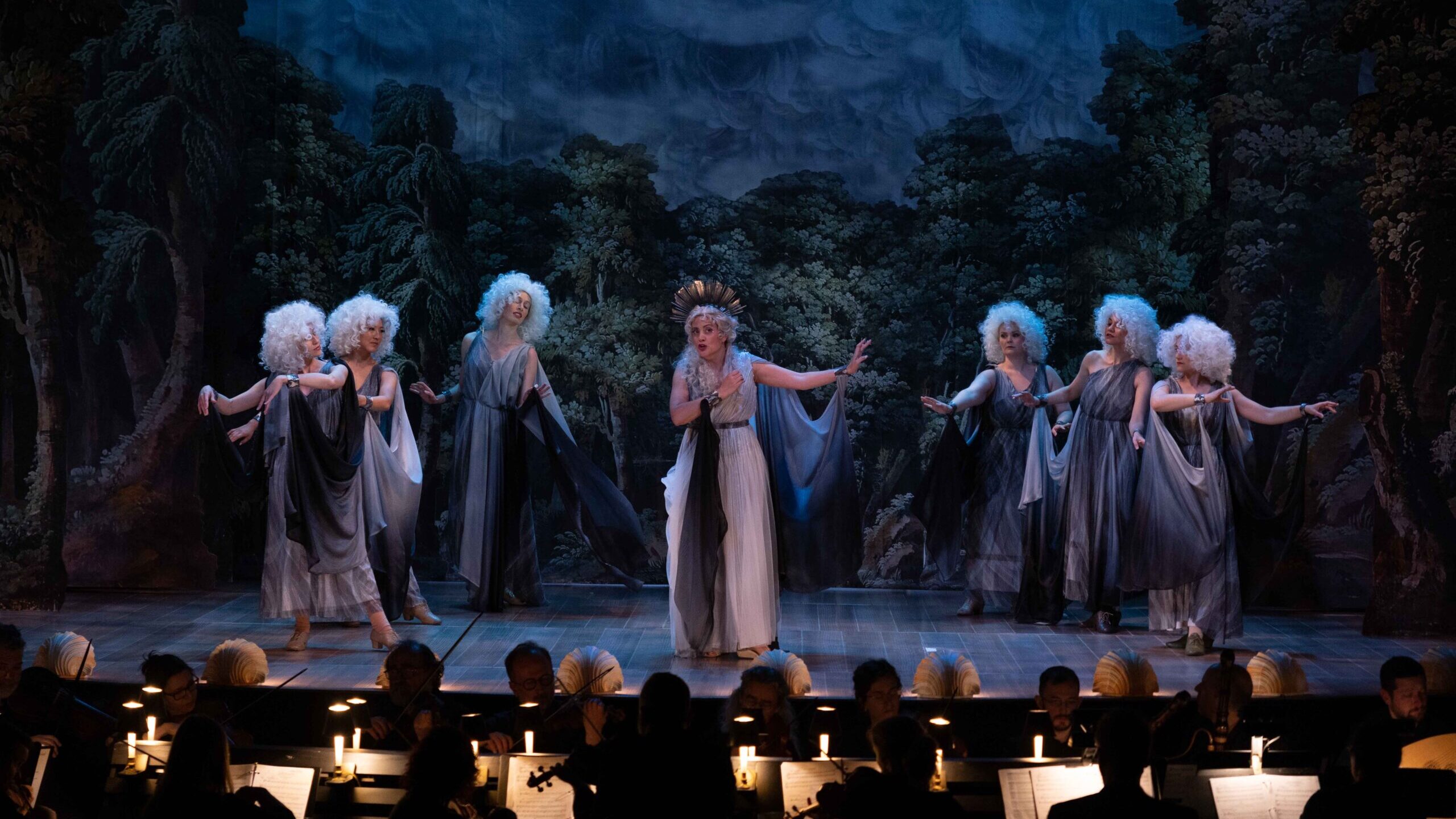Opera Director & Designer
Circé
Henri Desmarest (1661-1741)
First performed in 1694 at the Paris Opera, Henry Desmarest’s Circé features a libretto by renowned poet Louise-Geneviève Gillot de Saintonge. Circé tells the story of the sorceress Circe and Odysseus. Gilbert Blin staged this Circé production for the Boston Early Music Festival. He also signed for the set design.
Photo’s Kathy Wittman
About Circé
Madame de Saintonge, a literary career
Louise-Geneviève Gillot de Beaucourt (1650–1718), known in literature under her married name of Madame de Saintonge, inherited her taste for letters from her learned mother. Madame de Saintonge started her literary career by creating two librettos for Henry Desmarest, each centered on a strong female figure: Didon in 1693, and the following year, Circé, both produced by the Académie Royale de Musique (Paris Opera).
[ Livret de Circé, private collection.
Livret de Circé, private collection.
A unique voice and original approach
In 1696, Saintonge published an Histoire secrète de Dom Antoine, Roy de Portugal, based on the archives of her Portuguese family. The same year, a collection of Poésies galantes offered over one hundred of her works. This book was reissued in 1714 with additional material and showed the great variety of her production as an author. Her rich literary work does not appear to have been inspired by an especially eventful or unusual personal life. As the Histoire littéraire des Femmes Françoises noted in 1769: “She was born in Paris in 1650, and died there on March 24, 1718, aged sixty-eight. We have spoken of her charms and her talents: but we have not been told of any peculiarities of her life.” Nevertheless, Madame de Saintonge is known today for her unique voice and original approach to the various genres in which she worked. For French opera after the deaths of Lully and Quinault, she contributed to renew the genre by establishing a new relationship between the actions of her main characters and their theatrical environment, offering multiple opportunities for musical developments and stage effects. This approach is exemplified by Madame de Saintonge’s libretto for Circé.
Boston Early Music Festival
NEC's Jordan Hall, Boston
Premiere June 4, 2023
CD available via BEMF website
Artists
Paul O’Dette & Stephen Stubbs, Musical Directors
Gilbert Blin, Stage Director & Set Designer
Robert Mealy, Orchestra Director
Melinda Sullivan, Dance Director
Marie-Nathalie Lacoursière, Choreographer
Pierre-François Dollé, Choreographer
Jérôme Kaplan, Costume Designer
Alexander McCargar, Associate Scenic Designer
Kelly Martin, Light Designer
Important links
Get in touch
Copyright
© 2024 Gilbert Blin, All rights reserved


